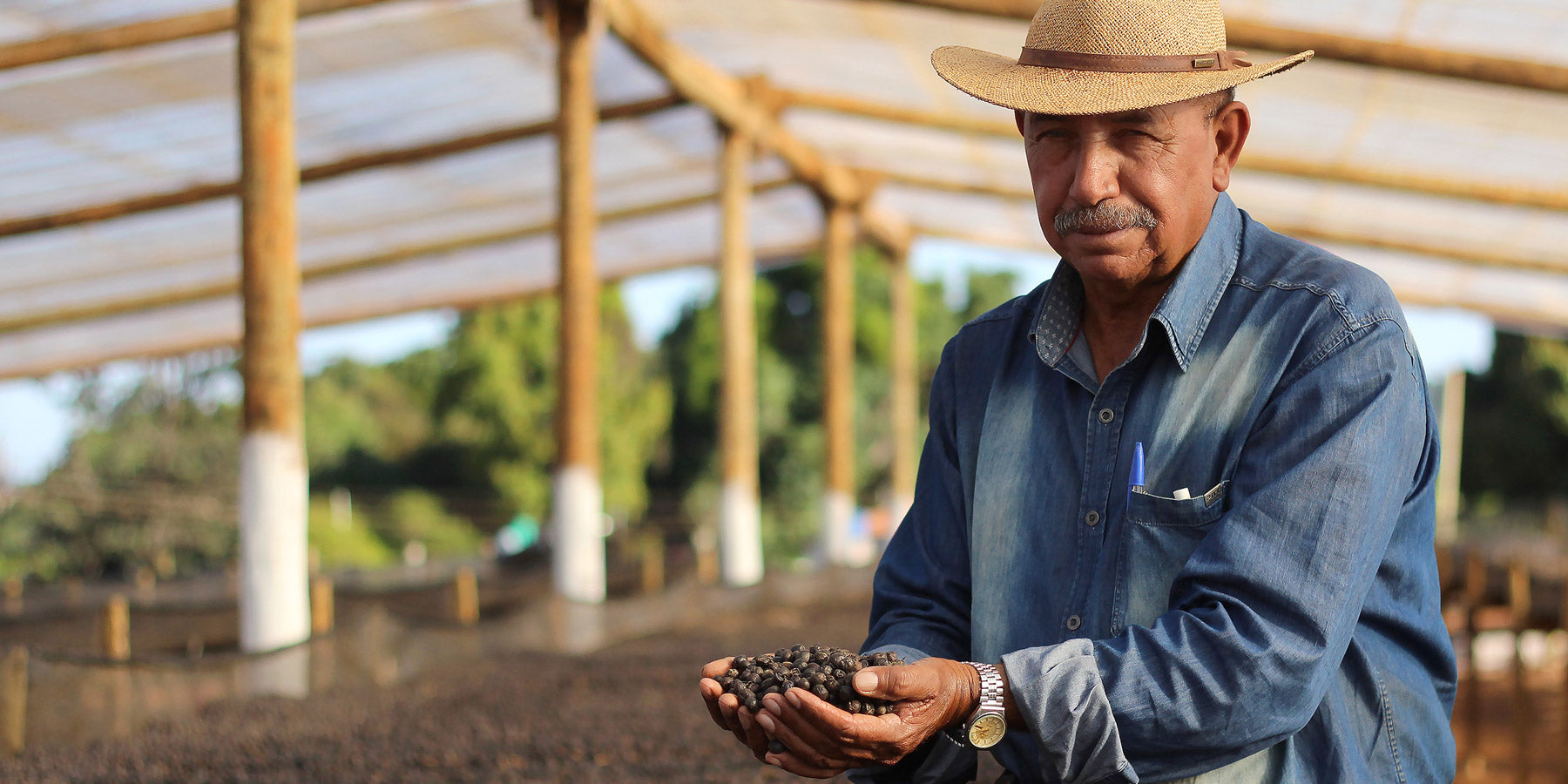The result is a wonderfully fruity coffee that is unusual for Brazilian coffees. And yet it is completely on trend, because the forms of processing, especially the different types of fermentation, are developing rapidly and expanding the range of green coffees to include many exciting variants. The main goal is to achieve very special aromas and improve the cup quality. During fermentation, producers experiment with different microorganisms and investigate how they affect the sensory profile and cup value of a coffee. How does the coupling of different microorganisms influence coffee fermentation and how does this improve the cup profile?
Coffee preparation with fermentation - natural processes used in a new way!
Coffee fermentation is a naturally occurring process that begins as soon as a coffee cherry is picked. It occurs when water, sugars, and starches in the cherry naturally break down into acids and alcohols. Fermentation typically occurs in two ways: aerobic (an oxygen-rich environment) or anaerobic (an environment without oxygen) . Both fermentation styles can be controlled in different ways. In any fermentation, microorganisms are responsible for converting these sugars and starches into acids and alcohols. There are thousands of microorganisms identified in fermentation, but some of the most common include yeasts (such as Saccharomyces cerevisiae), bacteria (such as Lactobacillus), and fungi.
Each individual microorganism affects fermentation (and therefore coffee flavor) in a different way. While some (particularly Saccharomyces cerevisiae and Lactobacillus) are known to affect the smell, color and pH of a coffee, the effects of other microorganisms on fermentation are still being studied.

Coffee preparation -
How microorganisms influence fermentation
The main microbial groups of coffee are bacteria, yeasts and filamentous fungi . Specific microbial species vary between coffee producing areas, probably due to environmental conditions, coffee varieties and processing methods. They consequently affect cup quality in different ways. Processing methods vary from farm to farm, depending on climatic conditions, fruit ripeness, financial resources, machinery and technology. More recently, controlled fermentation has been introduced in the coffee sector to provide greater security to producers experimenting with coffee processing. By monitoring and controlling variables such as temperature and time, producers can more effectively manage the flavours of their coffee and subsequently manipulate its sensory profile.
Wine, beer, coffee ... it's all a question of fermentation
Compared to beverage sectors where fermentation has been used for thousands of years (such as beer and wine), fermentation in coffee is still at a relatively early stage. What is certain, however, is that fermentation can occur both naturally , without external input from the producer , and through the targeted use of starter cultures. Natural fermentation relies on the microorganisms already present in and around a coffee cherry to break down the sugars and starches within it. However, using starter cultures, such as a kombucha culture, is like adding a new ingredient that boosts and controls fermentation in a specific way.

Different starter culture, different taste
Each starter culture is unique. As a result, they can produce a variety of end results in terms of a coffee's flavor profile. The production of specific flavor nuances is due to the different fermentation pathways of the culture starters during the complex fermentation process. Natural fermentation is often unpredictable and can have unusual effects on the cup profile. However, culture starters can be selected that improve coffee quality. There are technological alternatives for better control of fermentation. This allows for a standardized process that guarantees the production of novel coffee flavors and promotes the development of desirable sensory profiles. Microbial performance by using anaerobic conditions in closed batches , for example, has been significantly improved . It has also helped to inhibit unwanted fungi and bacteria.
The isolation of select microorganisms is intended to transform the chemistry of coffee fermentation and create new flavor and aroma profiles . Isolated yeasts from the coffee itself can be used, which are purified and propagated. Producers then use these microorganisms in controlled fermentation, carefully monitoring temperature, pH and time to improve consistency. By controlling fermentation with the select microorganisms, producers have been able to more effectively design their sensory profiles. Over several years, this controlled form of fermentation has been tested in Brazil's main growing regions and they have delivered the same flavor profile year after year on each farm. The idea is that a green coffee buyer or roaster working with a producer using these processes can expect the same level of quality on a regular basis, without seasonal variations.

The country needs new taste
The new possibilities are perhaps best explored through the unusual flavor profiles that the new fermentation techniques produce. Brazil is the largest coffee producer in the world . The vast majority of coffee grown in the country is processed naturally. Brazilian beans often result in coffee with a full body, low acidity and sweet, chocolatey notes.
However, with the new fermentation techniques, Brazilian producers can change the flavor profile of their coffees . This helps them to differentiate themselves from others in the market. The new forms of fermentation can produce coffees that receive higher quality ratings. This creates completely new flavors for Brazilian coffees. They are sweet notes of brown sugar, dried fruits such as raisins and dates, but also lemongrass, mango, cherries, strawberries . The development of such a controlled culture of bacteria and yeasts also inhibits the proliferation of pathogenic fungi. This has a positive effect on the sensory quality of the coffee.

Increased value in the producing country
Another benefit to producers from controlled fermentation is the effect it has on added value. Usually, most of the added value in consuming countries is created by roasters. By using fermentation processes to improve taste and increase quality, producers can diversify their offering and be more competitive in the market. By using these options and processes, producers can offer a new menu of coffee flavors, so to speak. This can serve a wider range of buyers. For example, those who like a very sweet or super fruity profile or floral flavors, but mostly did not find these in Brazilian coffees.
Controlled fermentation allows for the repetition of sensory profiles and can increase the aroma, flavour and acidity of coffee. This allows different varieties to achieve a similar flavour profile, but with different nuances and intensities. These experimental coffees offer roasters unique opportunities to work with high-quality coffees with exotic flavour profiles. While controlled fermentation and microorganisms in the coffee sector are still the subject of ongoing research, the work is worthwhile for producers, roasters and consumers alike. #staywild


